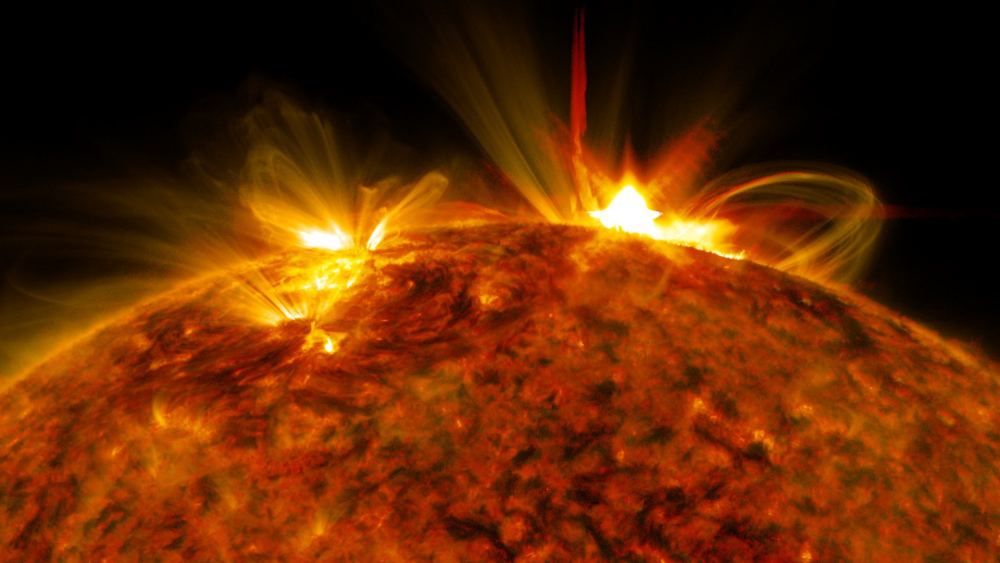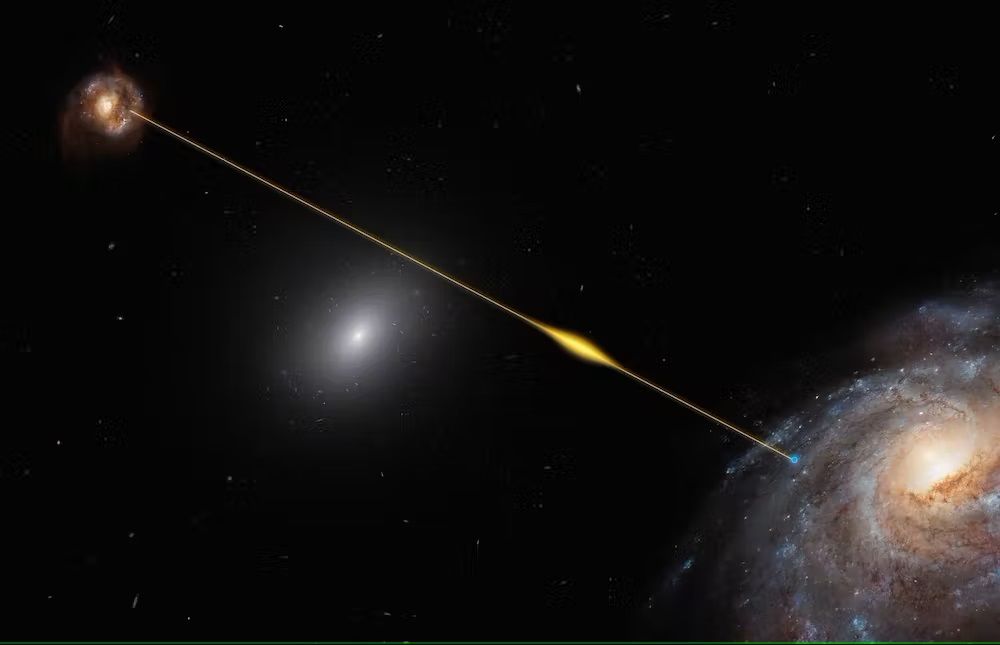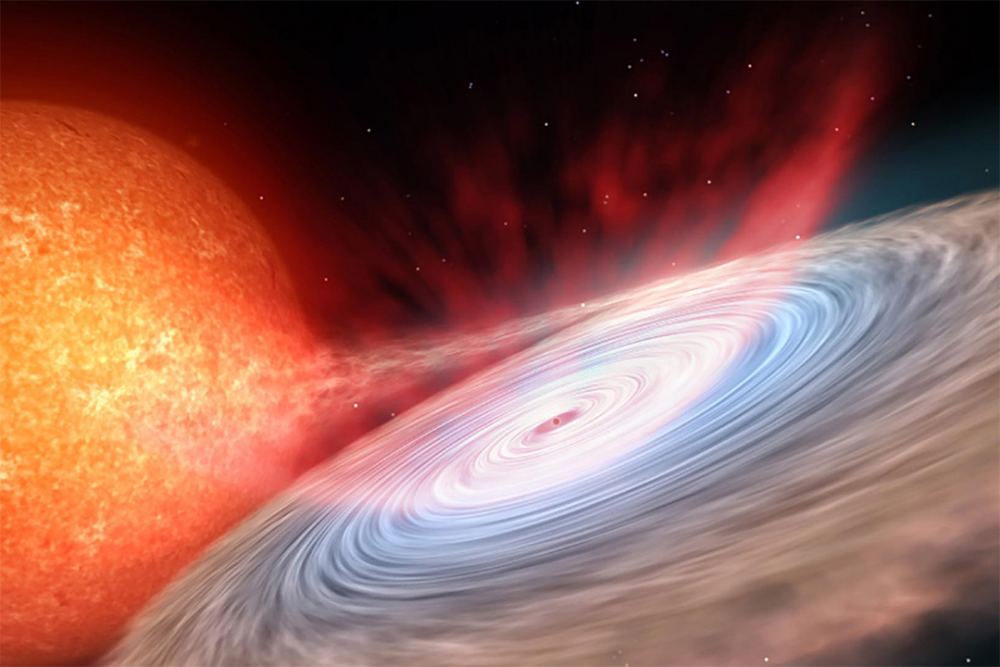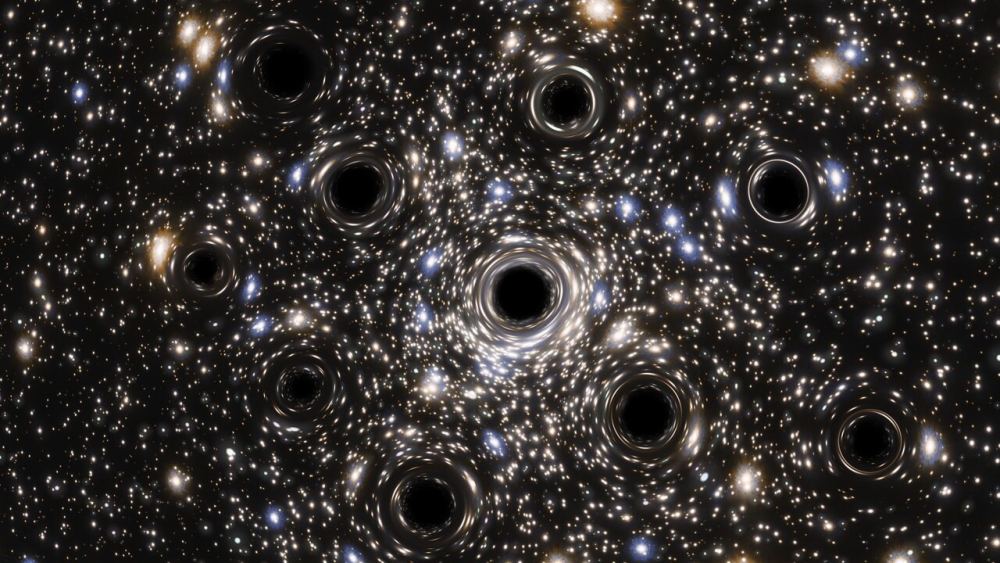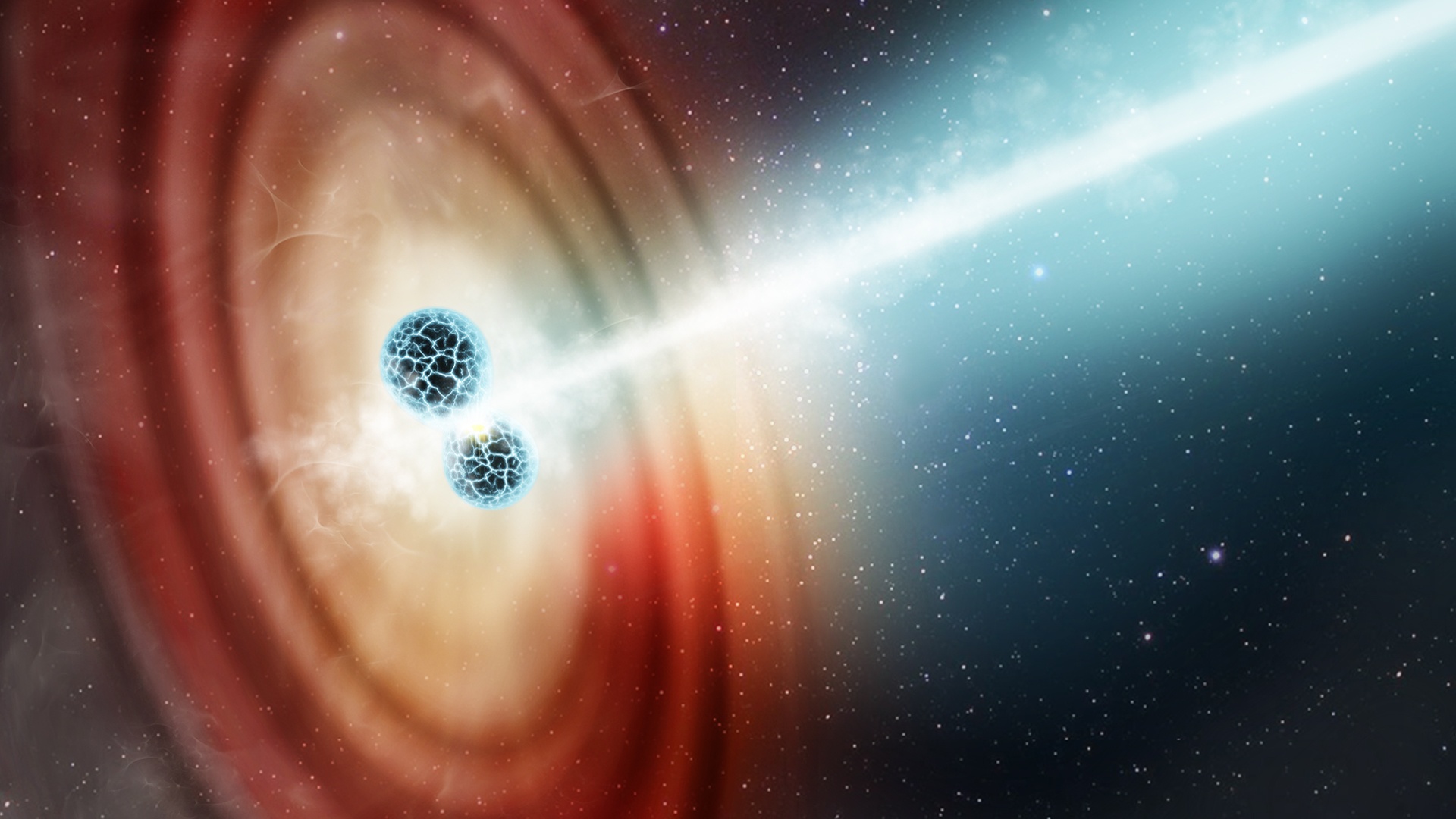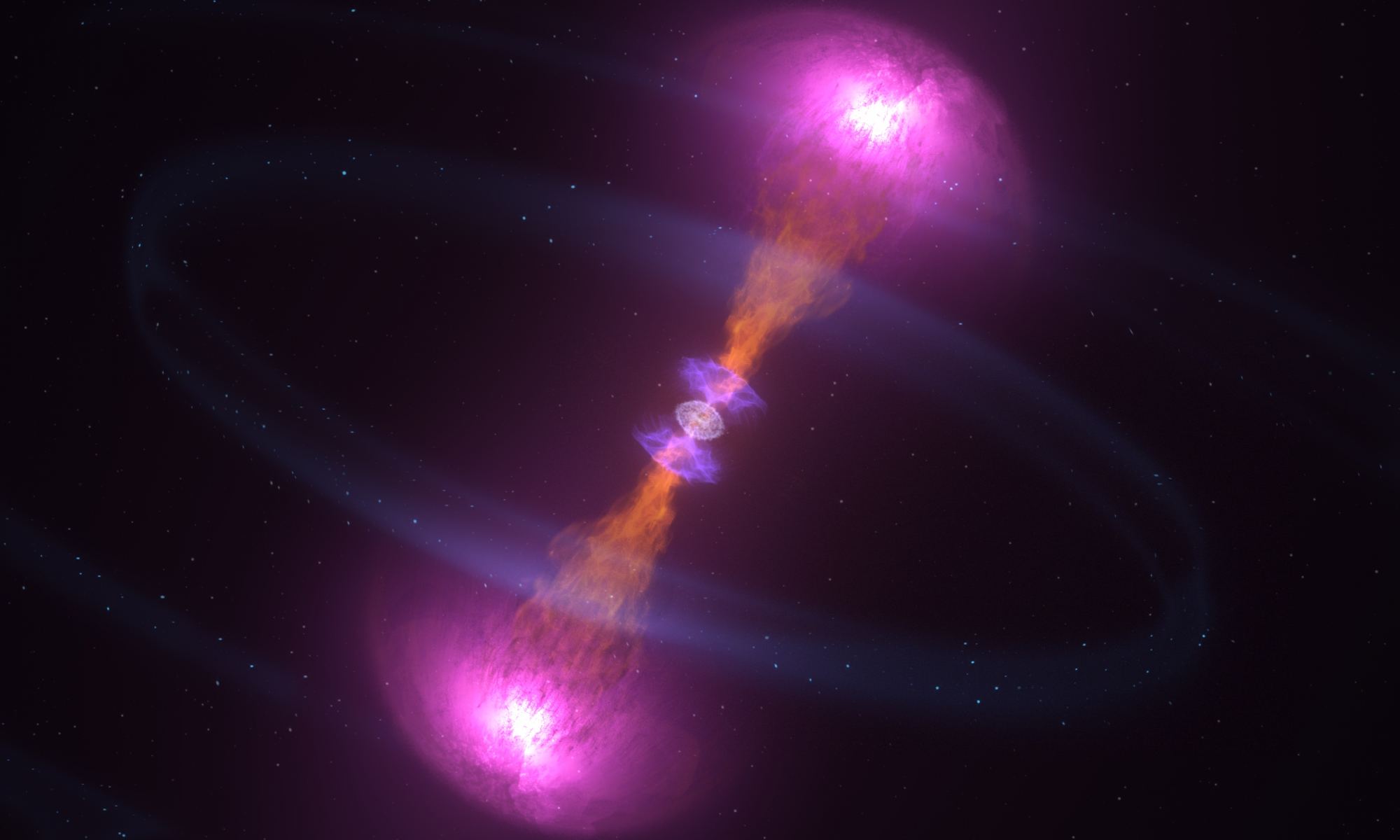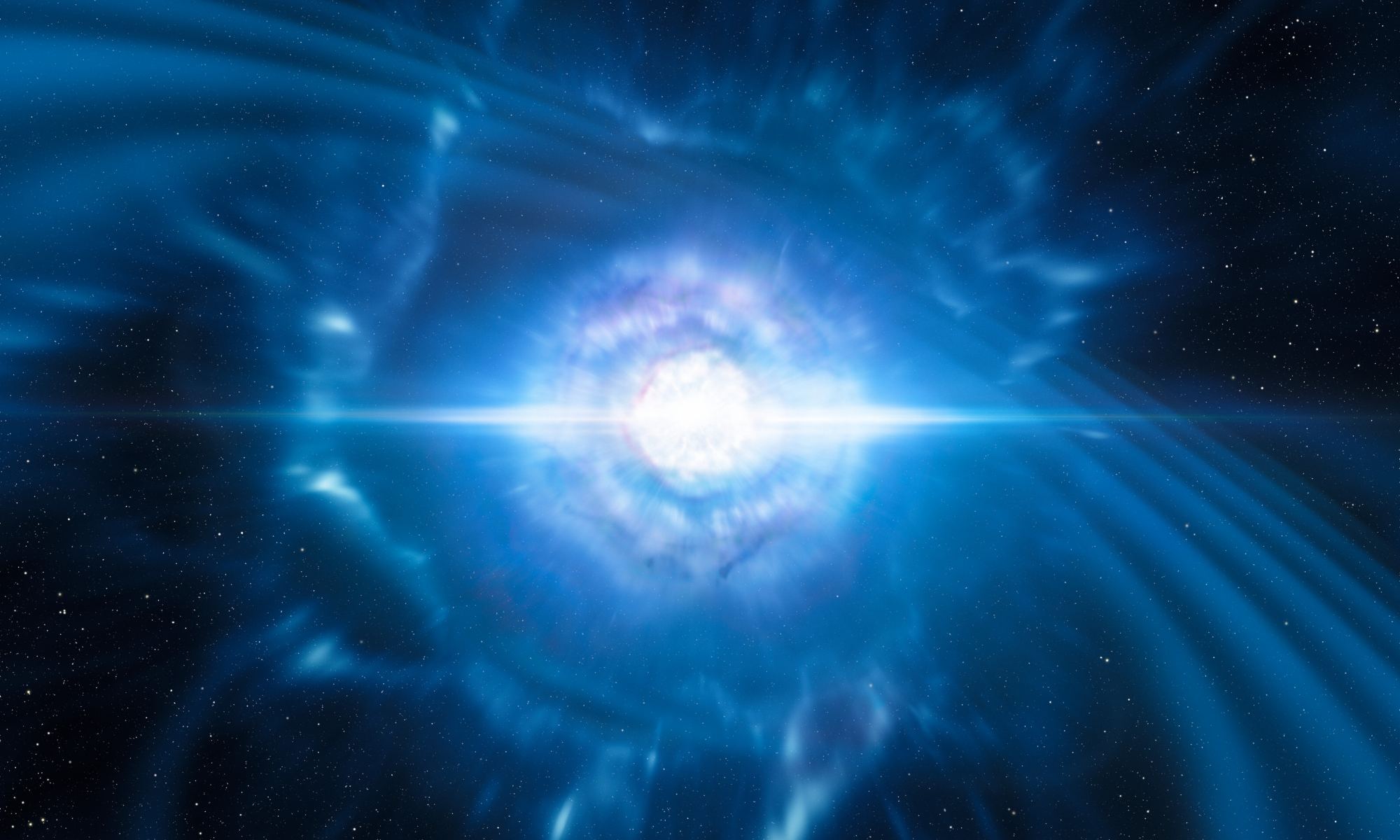In August 2017, astronomers observed a Gravitational Wave (GW) signal that resulted from the merger of two neutron stars – known as a “kilonova” event. The aftermath of this event (GW170817) was studied by 70 ground-based and space-based observatories in multiple wavelengths. This was the first time astronomers observed a binary neutron star merger in terms of electromagnetic radiation (particularly gamma rays) and GWs. The energy released by this merger was comparable to that of a supernova, leading astronomers to theorize that it must have resulted in a black hole.
Two years later, the Hubble Space Telescope observed the remnant and noted the powerful afterglow and gamma-ray bursts (GRBs) created by the merger, which was consistent with a black hole. However, it would take several more years of analysis before scientists could draw a complete picture of what resulted from this explosive event. Using data from Hubble and several radio observatories, a team of researchers detected a rapidly-rotating disk of material around the black hole and a structured relativistic jet emanating from it.
Continue reading “Hubble Examines the Wreckage From the 2017 Kilonova”
